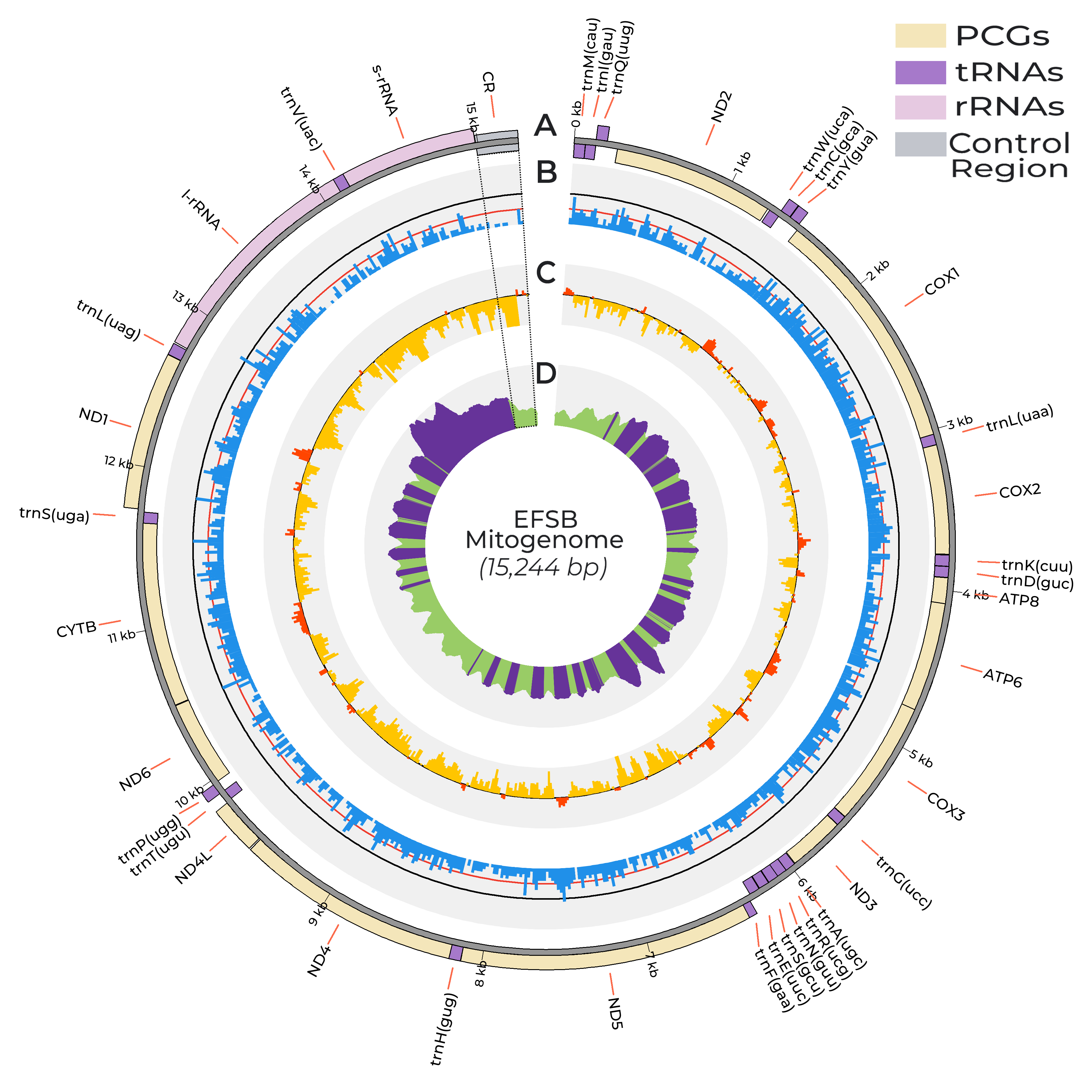National Institute of Molecular Biology and Biotechnology
University of the Philippines, Diliman
Home » NIMBB Study Maps the Mitochondrial Genome of the Eggplant Fruit and Shoot Borer
NIMBB Study Maps the Mitochondrial Genome of the Eggplant Fruit and Shoot Borer
Eggplants, although botanically considered as fruits, are a staple vegetable in different cuisines worldwide. But for farmers especially here in the Philippines, growing eggplants can be a battle against a tiny yet formidable foe: the Eggplant Fruit and Shoot Borer (Leucinodes orbonalis). This insect, native to South and Southeast Asia, is a major pest that can devastate eggplant crops by boring into the fruit and stems, making them unsuitable for consumption.
Understanding the genetics behind how this pest operates is key to finding new ways to control it. Recently, NIMBB researchers have made significant strides by decoding the complete mitochondrial genome of L. orbonalis, which not only provides insights into the biology of this pest but also opens new doors for developing targeted pest management strategies.
What is a Mitochondrial Genome?
The phrase “mitochondria are the powerhouses of the cell” has become so familiar that it’s practically a cultural catchphrase. But what does this really mean? Mitochondria are organelles within our cells that play a crucial role in generating the energy needed for our cells to function. Each mitochondrion contains its own set of genetic instructions, known as the mitochondrial genome (mitogenome), which is essential for this energy production process.
Insects, like all animals, inherit their mitogenomes solely from their mothers. This mitogenome is smaller than the DNA found in the cell’s nucleus, but it’s important for understanding evolutionary relationships, population structure, and even species identification.
The Study: Decoding the Mitochondrial Genome
In a study published in Insects by MDPI, NIMBB researchers, Mr. Joshua Despabiladeras and Dr. Ma. Anita Bautista sequenced and analyzed the complete mitogenome of L. orbonalis. The main objective was to create a reference assembly of this pest’s mitochondrial genome and use that information to determine where it fits in the evolutionary tree of crambid moths, a group that includes many agricultural pests.
The mitochondrial genome of Eggplant Fruit and Shoot Borer (EFSB) consists of 37 genes, including those that code for essential proteins involved in energy production, transfer RNAs (tRNAs), and ribosomal RNAs (rRNAs). One of the key findings was the arrangement and structure of these genes, which were then compared to those of other pyraloid moths. This comparison helped in identifying unique features and evolutionary differences that could assist in developing more precise pest control methods.
Why is this important?
The implications of assembling the complete mitochondrial genome of L. orbonalis are far-reaching. “The reference mitogenome of the EFSB can be a useful future resource in further refining the phylogeny of crambid moths,” Mr. Despabiladeras stated, alluding to the relatively scarce genomic resources for crambid moths. In other words, it helps scientists understand where EFSB fits in the broader family tree of related moths.
Moreover, this genetic blueprint can be instrumental in future population studies of L. orbonalis, especially in countries like the Philippines where the pest is particularly problematic. By studying the variations in mitochondrial DNA across different populations, researchers can track the spread and evolution of the pest, aiding in the development of more effective control strategies.
Looking Beyond: The Future of EFSB Research
The researchers put forth a significant advancement but also point at areas needing further investigation. The study’s phylogenetic analysis used only the mitogenome and combining it with nuclear genome data could provide a clearer evolutionary picture. While resources for crambid moths are limited, efforts are underway to address this as the same team of NIMBB researchers is already working on assembling the nuclear genome of L. orbonalis. Integrating this with the mitochondrial genome will enhance the understanding of its phylogenetic placement and “offer insights into the detoxification capacity of EFSB, which can be leveraged in future management schemes,” Mr. Despabiladeras said.
A Step Towards Better Pest Management
Completing the mitochondrial genome of EFSB is a major step forward in pest management. This new knowledge helps us understand this damaging pest better and brings us closer to sustainable solutions for protecting eggplant crops.
As researchers explore the genetics of pests like L. orbonalis, we edge closer to growing crops with fewer chemicals, benefiting both the environment and farmers, which highlights the impact of genetic research on solving agricultural challenges.
So, next time you enjoy an eggplant in your meal, remember that behind the scenes, scientists are working hand-in-hand with farmers to keep this delicious vegetable safe from pesky invaders like L. orbonalis.
Reference:
Despabiladeras, J. B., & Bautista, M. A. M. (2024). Complete Mitochondrial Genome of the Eggplant Fruit and Shoot Borer, Leucinodes orbonalis Guenée (Lepidoptera: Crambidae), and Comparison with Other Pyraloid Moths. Insects, 15(4), 220. https://doi.org/10.3390/insects15040220
